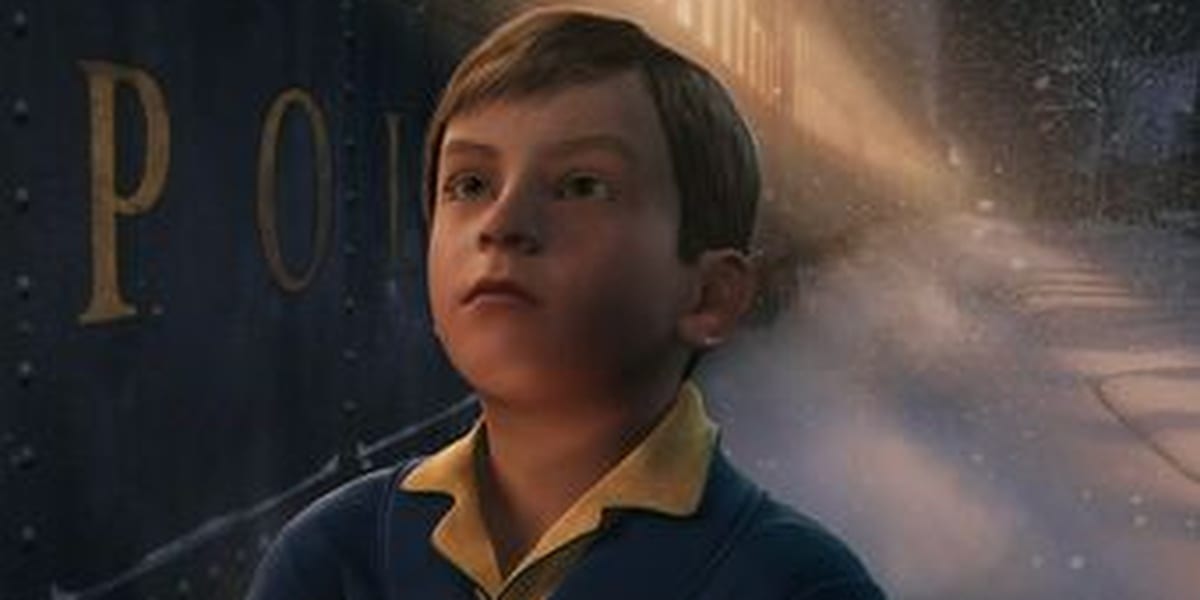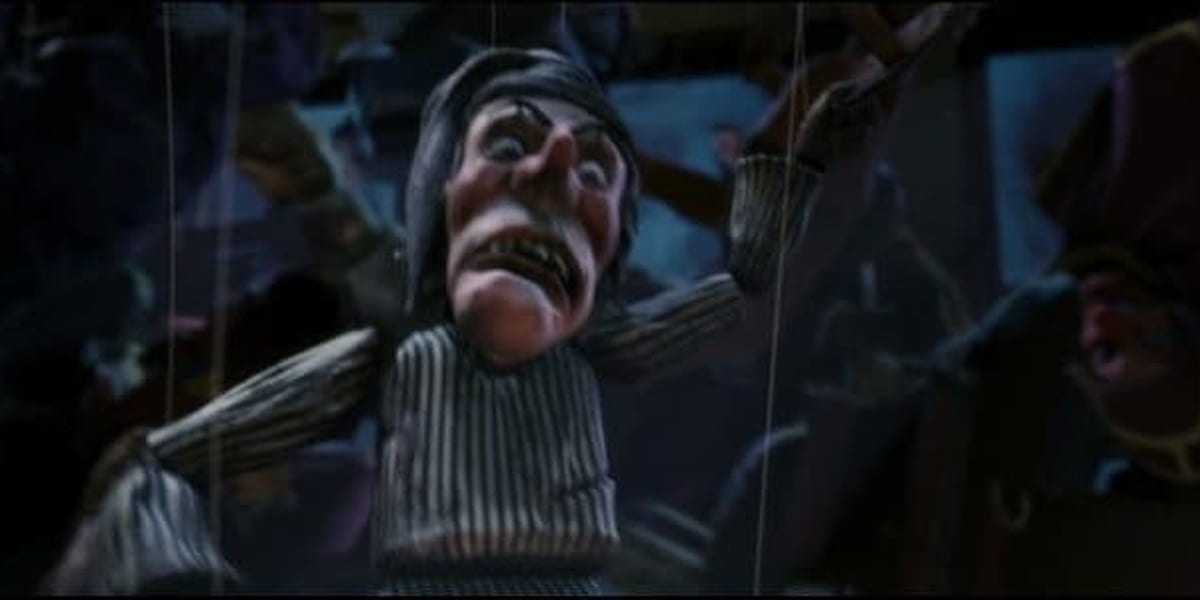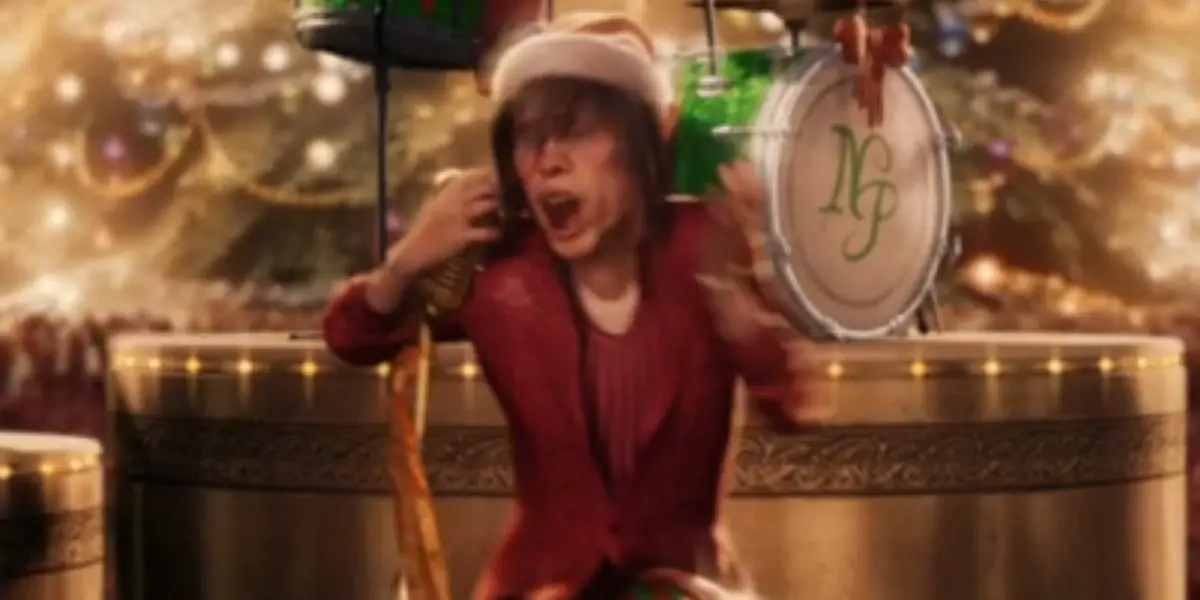The Polar Express is one of those buried treasures of childhoods past. It’s significant for anyone that’s ever been a child and wondered about Santa, which makes the film relatable to all who celebrate Christmas. At some point, a child wonders about who he is, where he is, why he does what he does and all the magic that goes with it. It seems impossible for one man to deliver millions of presents all over the world in one night, but this film proves that, for a fact, it’s not out of reach.
Seeing is believing, according to the hobo that hitches a ride onboard the magical train anytime he wants. A young boy needs physical evidence as he’s beginning to question Santa’s existence, going over articles and shaking his head at Santas in department stores. He makes the life-changing decision to get on the train, and he’s set for life regarding his stance on Santa from then on.

The boy, who remains nameless throughout the film, consistently causes delays without actually meaning harm, much to the Conductor’s annoyance (he’s never been late and as far as he’s concerned, he never will be). The boy befriends a joyful girl and a shy boy named Billy, and the three bond, helping one another throughout the film. Billy gets two new friends when he’s never had any before, and the boy believes in Santa once more. The boy is chosen by Santa to be given the first gift of Christmas, a noteworthy honor, and selects a one-of-a-kind gift of one of the bells from, Santa’s sleigh. If you can hear the bell, then you truly believe.
He loses it thanks to a hole in the pocket of his robe, but Santa ensures that the boy gets it back Christmas morning. In the final moments of the film, the boy, narrating as an adult, states that “the bell still rings for me, as it does for all who truly believe.” Who knew a silver bell could carry such symbolism? It’s childhood innocence and a belief in magic (aka Santa) all wrapped into one.
Technology
I saw the film in theaters upon its release in 2004, and I remember thinking how impressive the tech looked. Meaning, I thought the characters, everything from their movements to their looks, were incredibly realistic, or as realistic as they could get in computer animation. For 2004, it’s ahead of its time. It might pale in comparison to some of the special effects and other tech we’ve seen in films like Avengers: Endgame, but The Polar Express deserves praise for its technological aptitude in 2004. It really was a trendsetter in technology for future films.
In this article from CNN, published in 2004, the writer criticizes the film’s technology. While they praise the artwork and action sequences, the writer considered the human characters to be “creepy” and described Santa’s look as “radioactive” given his glow.
To that, I have to respectfully disagree.

I always thought Santa’s glow aligned more with a quality that could be described as angelic. It gave me the impression that Santa was being represented as his own brand of magic. It wasn’t scary or unnerving. Santa may not be an ordinary human, but he’s a figure in human lore that brings joy and happiness, hope and faith. The glow is just a part of who he is and all the wonderful things he brings to the table, brightening up the lives of children all around the world.
As for the young children, I suppose I paid more attention to their personalities than their looks. At least initially. Thinking back, I think I was wondering where I could get a cute pink nightgown like the girl’s in the movie, though I did acknowledge that the characters looked life-like. The article notes that “when the characters are still” and are “processing information from each another”, they look “lifeless.” This is in reference to their eyes.
I can see where the author’s coming from, but when it comes down to it, I think that’s something reserved more for adult observation. Children are more invested in the story. As a child, I imagined myself on the train alongside the other kids, eagerly awaiting the next event that would add to the adventure. Perhaps that’s just me, but I don’t recall any other kids mentioning “lifeless” eyes.
In any case, the technology is still an incredible asset to the film, and it holds up today. Given all the technological advances since 2004, that’s a remarkable achievement.
The Story
The main story focuses on a boy’s personal quest to determine once and for all if Santa is indeed real. Yet, the underlying core of that has to do with believing in something. That something may not necessarily be what everyone believes in, and you may have no physical proof. You just have to believe that that something exists, and you have to do so wholeheartedly without a shred of doubt. It’s a hard thing to do, and when you can’t (at least when it comes to Santa), I think that’s a part of losing childhood innocence.
The story has always been a heartwarming one. It saved a young boy from his own grief in discovering that a beloved childhood figure is made-up because he’s had the great honor of meeting the big man himself. We don’t necessarily find out why the other children decided to get onboard the train. I wouldn’t mind a more in-depth look as to why Billy refused and then raced after the train. What changed his mind in mere seconds? Hope? Wonder? Urgency?
It’s safe to presume that, bottom line, the main reason that each child is on the train is that they are on their own personal journeys. Perhaps they need something good and pure, something to believe in. Maybe they’re having difficult times in their lives, maybe they just need to get away, or like the boy, they need questions answered. Whatever the case, the story is a great lesson. Like the Conductor notes about trains, “It doesn’t matter where they’re going. What matters is deciding to get on.”

I always took that to be more metaphorical than literal. Whatever figurative train you need to take to spark some belief, save your sanity, or whatever you else you may need, it all comes down to a “yes or no” type of situation. Are you on board, or are you staying behind?
The Conductor is my favorite character. He has some of the best quotes of the movie, and he’s an important part of ensuring the boy gets back on track. Tom Hanks was the perfect choice to be The Conductor, making the character that much more legendary.
The hobo was also a significant character. He helps the boy out, from getting him to the girl and the Conductor, and later saving all three of them before they nearly fall off the train. He’s strange, and a bit eccentric, but that gives his character an extra air of mystery about him. How does a ghost come to haunt The Polar Express? That would be an intriguing story.
The action sequence taking place as the train dangerously travels across the ice and nearly sinks into frigid waters is one of the best in the film. The setting, the intensity and urgency bleeding off the characters and the score build up the scene perfectly, and transitions smoothly from danger to safety. The audience concurs, going from anxious to relieved.
Risqué
The film took some creative risks. For instance, the scene in the train car in which a puppet Scrooge with a broken nose yells at the boy, right in his face, out of nowhere. It was a creepy car to begin with, so it’s easy to sense that something is about to happen, but it was enough to make anyone jump in their seat, especially in the theater.
It no doubt scared a lot of kids, even after they showed that the hobo was operating the puppet, hence assuring kids that the puppet hadn’t just spontaneously come to life to essentially scare the crap out of the poor boy. When I saw it, I didn’t like the hobo character as much.

The creepy elf deserves a place in the risqué list, too. Specifically, the elf that’s helping the children get out of Santa’s giant bag. The elf’s line “Come on, trust me” in that creeper voice would’ve had me scurrying out of the bag for dear life. Yet, Billy hands over his present, which he’s been hanging onto since he found it, and slides down to the ground. Granted Billy did so reluctantly, but still. Elves are supposed to be cheery characters, not creepers. It was definitely a new take on the idea, and to this day it still makes me uneasy.
The biggest aspect that may be the most terrifying is the one we overlook. All these kids getting onto a train with people they don’t know. That doesn’t earn a red flag? In real life, yes, but in a movie where the train is magic and everyone is good, it doesn’t warrant concern. Unfortunately, the world isn’t safe enough to get on a random train that shows up in the middle of the night with The Conductor already knowing who you are and where you live, but in the movie world, there’s nothing setting off alarms or an Amber Alert.
We overlook that because obviously we already know the train is headed for the North Pole, and Santa. That’s just about the safest destination a kid can get to, even if the journey there is a little harrowing.
Symbolism & Music
The silver bell is the main symbol of the film. It signifies one’s belief in Santa. If you can hear it, then you truly believe. The silver bell is not just childhood innocence, but the core of any belief personified. If you can hear the bell, then you believe wholeheartedly. It means you believe in Santa in the film, but the silver bell can be applied to just about anything in life. If you believe in something enough, then you’ll hear the metaphorical sound of the bell, too. This is the greatest lesson, and message, to emerge from The Polar Express.
Believing in things sometimes means believing in the things you can’t see. That could mean love, faith, even God Himself. Seeing is believing in some cases, but in most, believing is just that–believing.

The coolest aspect of the music added to the film comes from Steven Tyler of Aerosmith, who voices one of the elves and sings “Rockin’ On Top Of The World” as the elves celebrate while Santa’s out delivering presents. Considering how hard those elves have worked all year, they’ve certainly earned a performance from Steven Tyler. Alan Silvestri’s score also complimented the film, providing Christmas-y tones in both heartfelt and intense sounds and vibes for the many different sequences.
Last Notes
I wanted to end this article in a meaningful way, because The Polar Express is a big deal in my family. When it came out in 2004, my mother, brother and I were going through a rough time. That Christmas was difficult, and we all needed something to believe in. We all needed just an extra speck of magic in our world, and The Polar Express did that and more.
We have countless silver bells from Hallmark, and we watch the movie every year at Christmastime. We saw it twice in the theater, one was a showing on Christmas Eve. As a kid, it opened up my world and the message of believing stuck with me. Watching The Conductor punch in the word “Believe” into the boy’s golden ticket is the most powerful image from that film, at least to me. That, and watching my brother grab my mom’s hand and say, “Mommy, I’m going to choose to believe” are some of my favorite moments.
The bell, or rather every single bell we own, still rings for us all these years later. After all, we truly believe.




Oh so excellent. I always “know” it is “good”
when I end the reading with misty eyes.